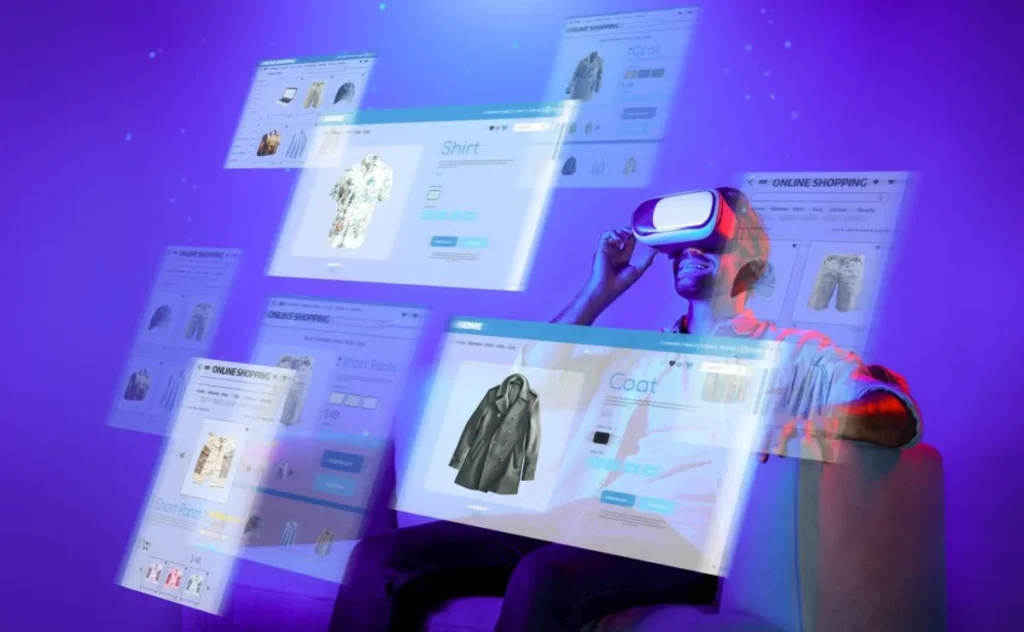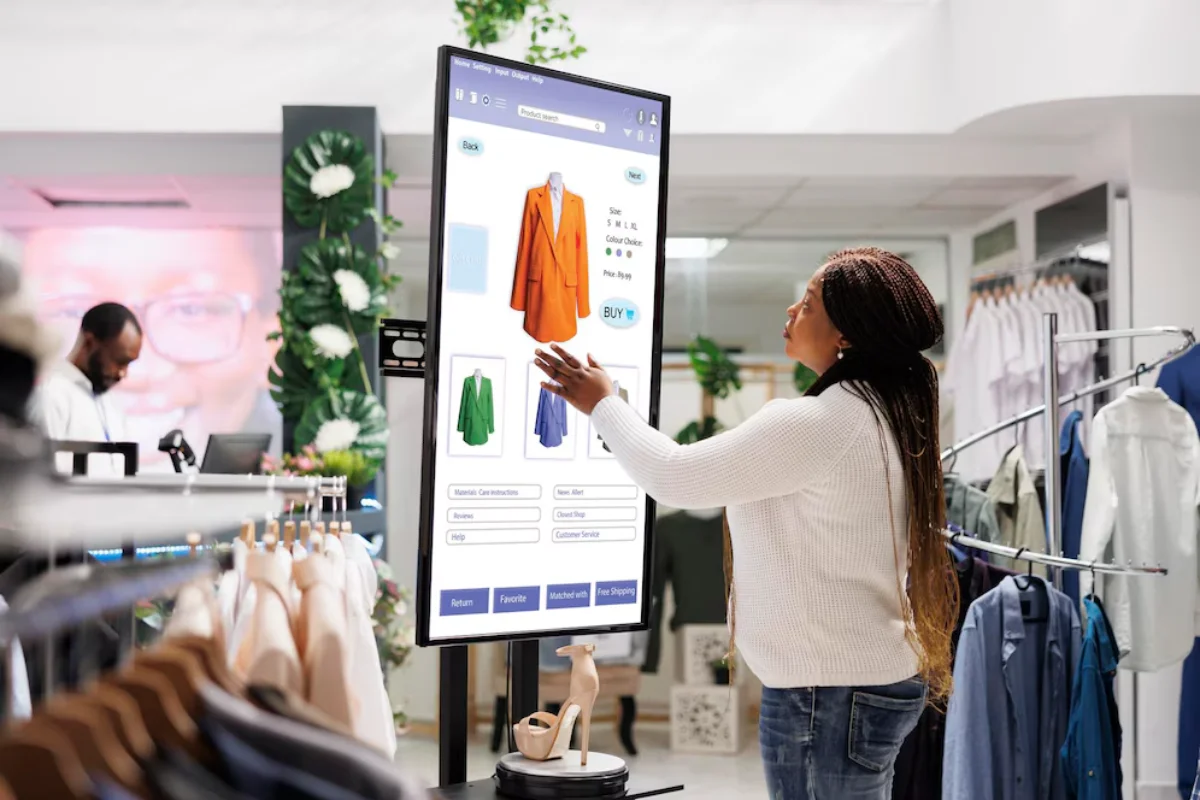The Technology Blog

How AI is Revolutionising Online Shopping & Recommendations
E-commerce has changed a lot lately, and Artificial Intelligence (AI) is driving this shift. AI is transforming online shopping. It offers product recommendations, smart chatbots, and virtual shopping assistants. These tools make shopping easier, more personal, and better for users.
Machine learning has changed retail. Now, businesses can study consumer behaviour, predict what customers like, and provide personalised shopping experiences. At the same time, AI shopping trends are reshaping the way customers browse, shop, and interact with brands.
But how exactly is AI driving personalised e-commerce? And what does the future hold for AI in online shopping? This article looks at how AI is changing digital retail. It improves customer experiences and shapes the future of online shopping.
Quick Guide: How AI Is Revolutionising Online Shopping
- Personalised product recommendations boost conversion rates
- Machine learning predicts customer preferences and reduces returns
- AI chatbots offer instant, 24/7 customer support
- Visual search lets users shop using images instead of keywords
- AI secures payments with real-time fraud detection
- Voice commerce enables hands-free shopping
- AI forecasts demand and manages inventory in real time
Pro Tip
Use AI-powered product recommendation engines to personalise your store’s homepage, product pages, and even emails. This boosts engagement and increases average order value.
Important
AI is powerful, but it must be used ethically. Be transparent about data collection and ensure your algorithms don’t reinforce bias. Trust is the foundation of successful AI-driven shopping experiences.
1. AI-Powered Personalised Shopping Experiences

One of the biggest AI shopping trends is the personalisation of e-commerce experiences. AI helps retailers understand what customers like and how they shop. This lets them make personalized recommendations.
How AI Creates Personalised Shopping Experiences
- Product Recommendations – AI suggests items based on past purchases and browsing history.
- Personalised Search Results – AI refines search queries for more relevant results.
- Dynamic Pricing & Discounts – AI adjusts prices and offers targeted discounts to increase sales.
- AI-Powered Styling & Shopping Assistants – AI suggests outfits, beauty products, and accessories based on user preferences.
Amazon’s AI recommendation engine drives 35% of total sales. It suggests products that customers are likely to buy.
Why Personalised E-Commerce Matters
- Increases conversion rates – Customers are more likely to buy products they find relevant.
- Enhances customer satisfaction – AI-driven personalisation reduces time spent searching for products.
- Boosts customer loyalty – Personalised experiences encourage repeat purchases.
2. Machine Learning in Retail: Smarter Product Recommendations
AI can now predict what shoppers want, even before they know it. This is a major breakthrough in machine learning for retail.
How AI-Driven Recommendations Work
- Collaborative Filtering – AI identifies similar shoppers and recommends products they like.
- Content-Based Filtering – AI analyses product features and suggests similar items.
- Deep Learning Algorithms – AI studies consumer trends and seasonal preferences.
Netflix’s AI checks more than 100 billion data points every day. It recommends content to users, showing how strong AI is in personalising experiences.
Why Machine Learning in Retail is Game-Changing
- Enhances user experience – AI makes shopping faster and more intuitive.
- Boosts sales & revenue – AI-driven recommendations increase purchase likelihood by 30%.
- Reduces product returns – More accurate recommendations mean fewer incorrect purchases.
3. AI Chatbots & Virtual Shopping Assistants
AI chatbots and virtual assistants are changing online shopping. They give instant customer support, handle questions, and offer shopping help.
How AI Chatbots Improve E-Commerce
- 24/7 Customer Support – AI chatbots answer questions and resolve issues instantly.
- Conversational Commerce – AI chatbots assist with product selection and checkout.
- Multilingual Support – AI-powered assistants help global customers in multiple languages.
Sephora’s AI chatbot gives personalised beauty advice. It helps customers discover the best makeup and skincare products.
Benefits of AI-Powered Chatbots
- Increases efficiency – AI handles multiple customers simultaneously.
- Reduces operational costs – Businesses save on customer service expenses.
- Enhances customer experience – Instant responses lead to higher satisfaction and conversion rates.
4. AI-Powered Visual Search & Image Recognition
AI is transforming how we find and buy products online. It uses visual search and image recognition to enhance our shopping experience.
How AI Visual Search Works
- Users upload an image or take a photo.
- AI scans the image and identifies similar products.
- AI-powered search engines recommend items based on colour, shape, and pattern.
Pinterest’s AI Lens lets users find products by taking a picture.
Why Visual Search is the Future of AI Shopping Trends
- Eliminates text-based searches.
- Enhances the discovery of new products.
- Creates a more interactive shopping experience.
5. AI in Fraud Detection & Secure Payments
AI boosts online shopping security. It spots fraud and stops cyber threats.
How AI Secures E-Commerce Payments
- AI Fraud Detection – Monitors transactions in real time to detect suspicious activity.
- AI-Powered Authentication – Uses biometric verification & facial recognition for secure logins.
- Machine Learning for Fraud Prevention – AI detects anomalies in user spending habits to flag potential fraud.
PayPal’s AI fraud detection checks millions of transactions every day. This helps stop credit card fraud.
6. AI-Powered Voice Shopping: The Rise of Voice Commerce
AI voice shopping is growing in popularity. Smart assistants like Alexa and Google Assistant are leading this trend.
How Voice Commerce Works
- Users give voice commands to search for products.
- AI suggests and adds items to the shopping cart.
- Voice assistants complete purchases using secure voice recognition.
Walmart and Amazon both support voice-activated shopping via Alexa and Google Assistant.
Why AI Voice Shopping is Growing
- Convenience – Hands-free shopping for busy consumers.
- Faster checkout process – Reduces time spent searching for products.
- AI personalisation – Voice assistants remember shopping preferences.
7. AI-Powered Inventory & Demand Forecasting
AI is helping retailers predict demand, optimise inventory, and prevent stock shortages.
How AI Inventory Management Works
- Predicts future demand trends based on past data.
- Prevents overstocking or understocking.
- Reduces waste & improves supply chain efficiency.
Zara uses AI to check customer demand and stock levels. This way, stores stay well-stocked.
The Future of AI in Online Shopping
Looking ahead, AI will continue to redefine e-commerce with innovations such as:
- Hyper-Personalised AI Shopping Assistants – AI will tailor entire shopping experiences to individual customers.
- AI & Augmented Reality (AR) Shopping – Users will try on clothes and makeup virtually before purchasing.
- Blockchain & AI in Retail – AI will improve transaction security and counterfeit detection.
- AI-Powered Supply Chain Automation – Retailers will automate deliveries using AI-driven logistics.
5 Frequently Asked Questions (FAQs)
1. How does AI personalise my online shopping experience?
AI analyses your browsing history, past purchases, and preferences to recommend products tailored to your interests in real time.
2. Are AI chatbots really helpful for shopping?
Yes. They provide instant assistance, product suggestions, and help with orders, improving customer satisfaction and reducing wait times.
3. What is visual search in online shopping?
Visual search allows you to upload or snap a photo of a product. AI then finds similar items based on patterns, colour, and shape.
4. Is voice shopping safe?
AI-powered voice shopping uses secure voice recognition to verify users and ensure safe transactions, especially with assistants like Alexa or Google Assistant.
5. How does AI help retailers manage inventory?
AI predicts shopping trends and demand, helping businesses avoid overstocking or running out of popular items by adjusting supply in real time.
The Future of AI in Online Shopping: Smarter, Faster, and More Personalised Experiences

AI is revolutionising online shopping by making e-commerce more personalised, efficient, and secure. From AI-powered recommendations and chatbots to visual search and fraud detection, AI is enhancing the entire shopping experience.
As machine learning in retail advances, AI shopping trends will continue to evolve, making personalised e-commerce smarter and more intuitive than ever before.









